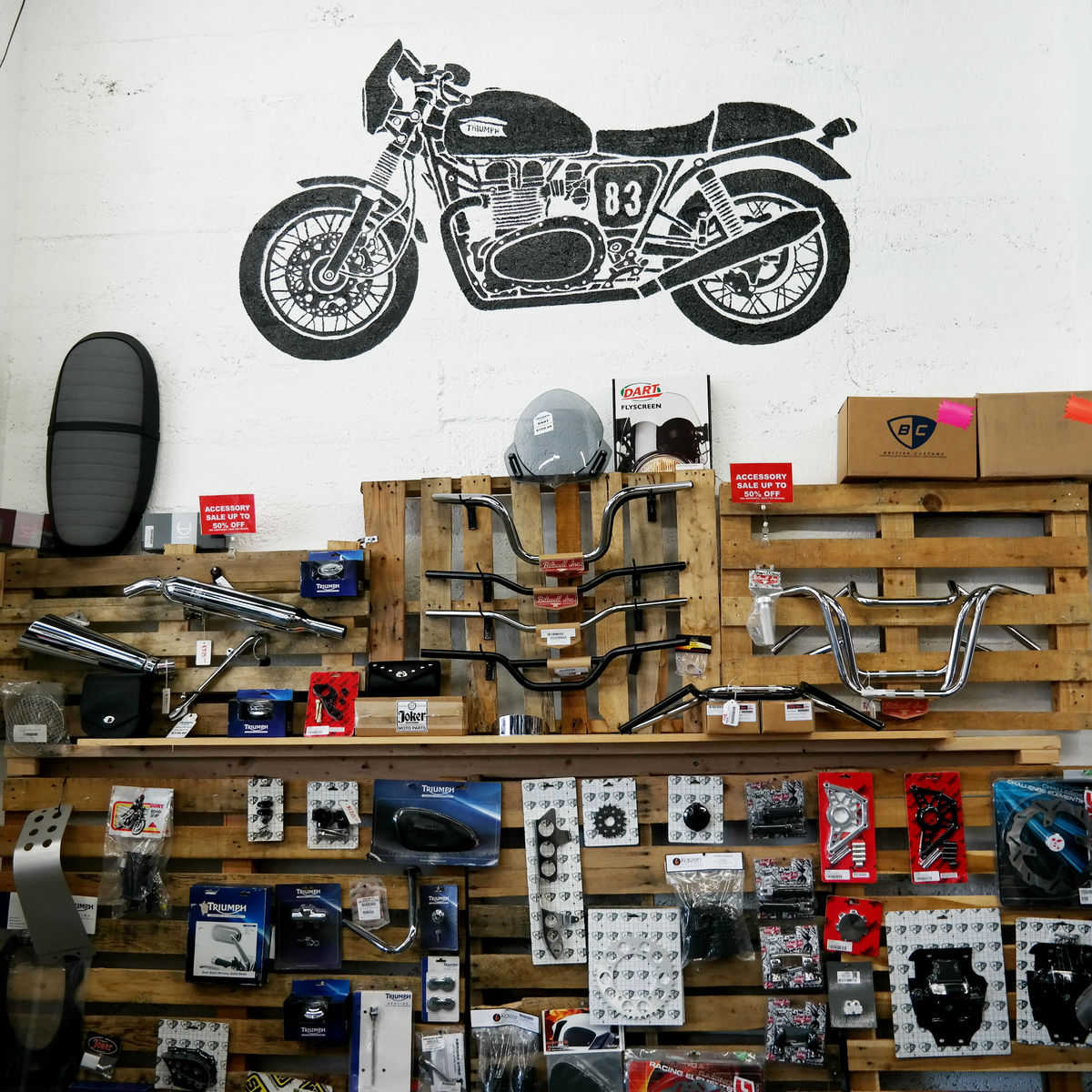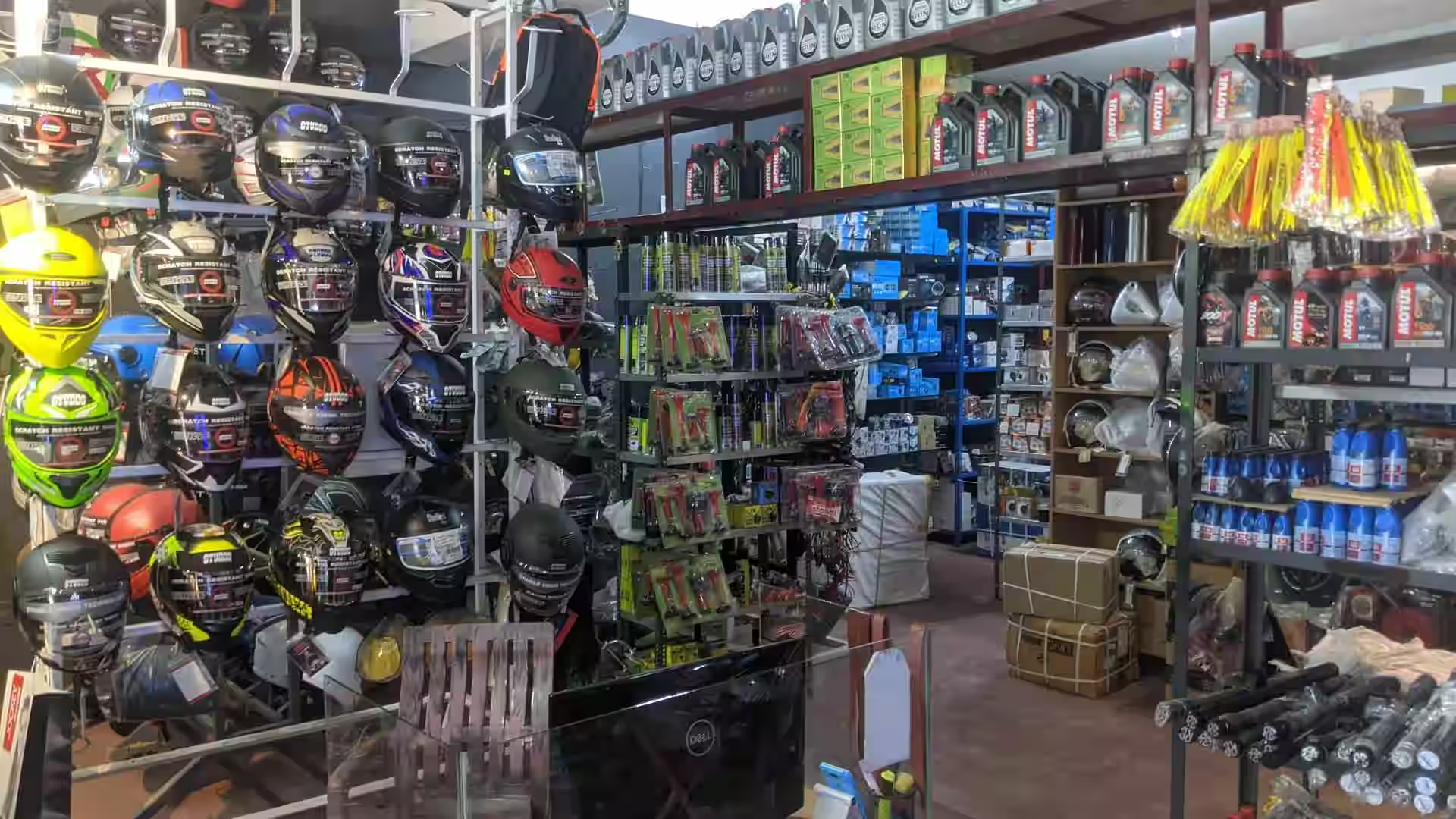Essential Motorcycle Parts NZ for Peak Performance and Safety
Essential Motorcycle Parts NZ for Peak Performance and Safety
Blog Article
Comprehending the Vital Parts of a Motorbike: A Comprehensive Guide for Enthusiasts
For motorcycle fanatics wanting to boost their riding experience and guarantee their bikes run smoothly, understanding the important components of a bike is critical. Each component, from the engine's elaborate operations to the essential duty of the braking systems, not just affects performance yet also security and convenience. This guide will go through the basic components that every motorcyclist must know with, enabling notified options in both maintenance and prospective upgrades. As we start this expedition, one must ask: exactly how does each component connect to develop the seamless adventure every enthusiast seeks?
Engine Components

The camshaft plays a vital role in controlling the timing of the engine's shutoffs, guaranteeing the accurate opening and closing essential for effective gas and air intake, along with exhaust expulsion. This timing is vital to keeping ideal engine efficiency and efficiency. Furthermore, the carburetor or gas injection system, relying on the motorcycle design, is responsible for mixing air with gas in the appropriate proportion for combustion.
The cooling system, either air or liquid-based, functions to maintain the engine's temperature level within operational limitations, avoiding getting too hot and making certain long life - motorbike shop. Each element, thoroughly designed and integrated, adds to the smooth procedure of the engine, defining the motorcycle's power output and general performance
Transmission System
Important to the bike's functionality, the transmission system guarantees effective power transfer from the engine to the wheels. This system makes up a number of essential components, including the clutch, gearbox, and final drive, each playing an important function in equating the engine's power right into motion. The clutch, commonly operated by a hand lever, offers to involve and disengage the engine from the transmission, enabling smooth gear adjustments and controlled velocity.
The transmission, frequently referred to as the transmission proper, includes a set of gears that motorcyclists can manually shift through to change the bike's rate and torque result. These gears are set up in a sequence that allows the motorcycle to increase smoothly and maintain optimal engine performance across numerous speeds. The majority of bikes make use of a sequential transmission, requiring the motorcyclist to move equipments in a predetermined order.
Braking Devices
While recognizing the transmission system is essential to utilizing a motorcycle's power, just as crucial is the capability to control and quit that power successfully, which is where braking devices enter into play. Brakes are crucial for safety and security and efficiency, offering the biker with the necessary control to browse different terrains and conditions. Typically, motorcycles feature two types of braking systems: disc brakes and drum brakes.
Disc brakes are much more prevalent in modern motorbikes due to their exceptional performance. This system offers far better warm dissipation, consistent efficiency, and enhanced stopping power, especially in damp conditions.
Conversely, drum brakes, though much less typical, are still located in some motorcycles. They work by pressing brake shoes against the internal surface of a drum attached to the wheel. While usually less effective in warm dissipation and quiting power, drum brakes are less complex and much more cost-efficient.
Understanding these braking systems' nuances permits cyclists to keep their motorcycles appropriately and value the design that ensures secure and efficient quiting.
Suspension and Steering
Suspension and guiding systems are essential components that significantly affect a bike's handling and experience comfort. The suspension motorcycle carburetor system, including forks at the front and shock absorbers at the back, takes in road irregularities, boosting stability and control. Front forks, inverted or commonly telescopic, compress and rebound to alleviate effects, while back shock absorbers keep tire contact with the roadway, crucial for grip and safety.
Steering, centered around the handlebars, connects the biker to the motorcycle's directional control. The guiding head bearings ensure smooth operation, allowing precise maneuverability. Proper alignment and maintenance of these bearings are critical for foreseeable guiding feedback and minimizing cyclist fatigue.
The suspension's adjustability is an additional crucial facet; preload, damping, and rebound setups permit customization to match various riding conditions and designs. This versatility is necessary for enhancing performance, whether browsing metropolitan streets or tackling sturdy routes. Technologies like digital shock absorber provide real-time adjustments, boosting experience quality throughout diverse surfaces.

Electrical Systems
After making certain a smooth and regulated trip with reliable suspension and steering systems, attention turns to the electric systems, a pivotal facet of contemporary motorcycles. These systems play a crucial role not only in beginning the engine but likewise in powering Our site numerous elements that boost the functionality and safety of the motorcycle.
At the heart of a motorbike's electrical system is the battery, which shops electrical power necessary for beginning the engine and powering complementary systems - motocross gear. The alternator or generator, combined with the rectifier-regulator, ensures the battery stays billed while the bike is in operation, converting power right into electric power and keeping voltage levels
The ignition system, one more essential component, is in charge of igniting the air-fuel mix in the engine's cyndrical tubes. Modern motorcycles typically make use of an electronic ignition system, providing better efficiency and integrity compared to typical systems.
Illumination systems, consisting of headlights, tail lights, and signs, are also essential, making certain exposure and safety and security for the cyclist. Extra see here electronic components such as sensing units, control units, and displays add to innovative functions like fuel shot management, anti-lock braking systems (ABS), and electronic dashboards, additionally enhancing the riding experience.
Final Thought
A detailed understanding of a bike's essential components, including the engine, transmission system, stopping mechanisms, suspension, steering, and electric systems, is crucial for enthusiasts intending to enhance comfort, efficiency, and safety. Mastery of these components enables notified decisions regarding upkeep and upgrades, eventually enhancing the riding experience. By integrating this expertise, cyclists can guarantee their bikes operate at peak performance and dependability, thereby making best use of both pleasure and long life of their automobiles.
For motorcycle fanatics looking to raise their riding experience and ensure their bikes run smoothly, understanding the important components of a bike is critical.Integral to the bike's performance, the transmission system makes certain effective power transfer from the engine to the wheels.While recognizing the transmission system is essential to harnessing a motorbike's power, equally crucial is the capacity to control and quit that power efficiently, which is where stopping systems come right into play. Typically, motorcycles include 2 kinds of stopping systems: disc brakes and drum brakes.
A comprehensive comprehension of a bike's vital components, consisting of the engine, transmission system, braking mechanisms, suspension, steering, and electrical systems, is important for fanatics intending to optimize performance, safety, and convenience.
Report this page